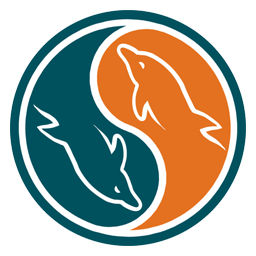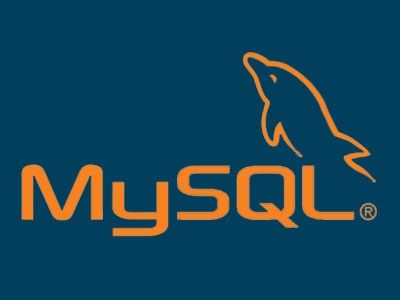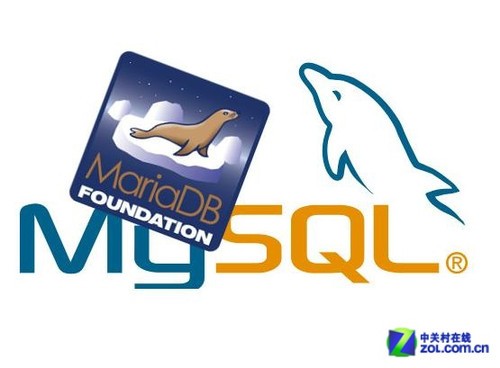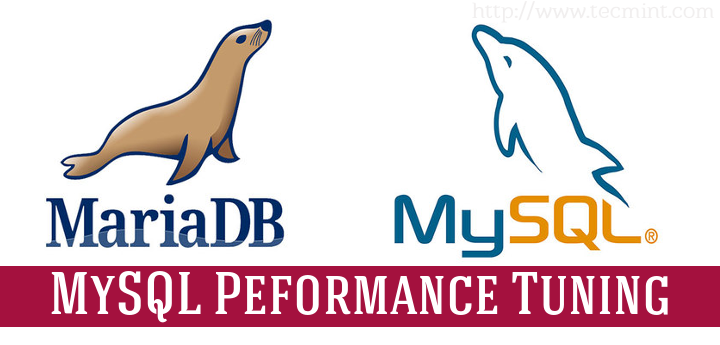10 recommended articles about Crusoe
Performance optimization index The index points to a location in the database where specific data is located. Creating an index on the column can arrange the information on the column. When the server needs to access this information for a query, it will know where to look because the index points to the relevant location. If a column is involved in querying, grouping, and sorting, the index will improve performance. Indexes with many duplicate values will not produce good results. You can use tables to join multiple non-unique indexes to improve performance. The more indexes, the better the performance is not necessarily. Adding an index does not necessarily improve performance. Query cache When running a select query, MySQL4.x will record the query and return results. This is accomplished by saving the result set in a special cache each time a select query is made. Then, when the server is asked to do the same query again, MySQL will retrieve the results from the cache rather than running the query again. This feature is enabled by default. Note that once a table changes, cached queries using this table become invalid and will be removed from the cache. This prevents queries from returning inaccurate data from the old table. Often
1. In-depth understanding of MySQL Advanced Drifting (6)

Introduction: Performance optimization index index points to a location in the database where specific data is located. Colleagues create an index on the column to arrange the information on the column. When the server needs to access this information for a query, it will know where to look because the index points to the relevant location. If a column is involved in querying, grouping, and sorting, the index will improve performance. Indexes with many duplicate values will not produce good results. You can use tables to join multiple non-unique indexes to improve performance. The more indexes, the better the performance is not necessarily. Adding an index does not necessarily improve performance.
2. In-depth understanding of MySQL Advanced Drifting (V)

Introduction: Transaction What is a transaction? A transaction consists of one or more SQL statements as a single unit. Each SQL statement in this unit is interdependent, and the unit as a whole is indivisible. If a statement in the unit cannot complete successfully, the entire unit will be rolled back and all affected data will be returned to the state before the transaction started. Therefore, only when all statements in the transaction are successfully executed can the transaction be said to be successfully executed. Four characteristics of transactions: Atomicity, each transaction must be considered an indivisible unit. Consistent
3. In-depth understanding of MySQL Advanced Drifting (4)

Introduction: Join Cross Join The simplest type of join is a cross join, which involves multiplying the tables to create an all-encompassing product. Example: select * from student,person;//The result is a combination of the two tables. All columns of the two tables are combined to produce a result set containing all possible combinations. This type is called a cross join, and the number of rows in the resulting table after the join is the same multiplied by the number of rows in each table used for the join. The above cross-connection will have a great impact on the performance of the database server, so use
4 in the connection. In-depth understanding of MySQL Advanced Wanderings (3)

Introduction: Function mathematics function requirements: 1) The absolute value of -123; 2) 100,88, 33,156 takes the maximum value; Aggregation function MySQL has a set of functions that are specially designed for summation or centralized summary of data in the table. These functions are often used in select queries containing group by clauses. Of course, they can also be used for Query without group 1) Among this set of functions, the most commonly used is the COUNT() function, which calculates the number of rows in the result set that contain at least one non-null value select co
5. In-depth understanding of MySQL advanced drifting (2)

# Introduction: Operators Arithmetic operators MySQL supports most common arithmetic operators that allow us to perform calculations. "+ (addition), - (subtraction), * (multiplication), / (division, return quotient), % (division, return remainder)", as in the following example: select 1+2; //Addition operation, the result is 3 select 2-1;//Subtraction operation, the result is 1 select 3*2;//Multiplication operation, the result is 6 select 6/2;//Division operation, the result is 3 select 25%7;//Division operation
6. In-depth understanding of MySQL Advanced Drifting (1)

Introduction: Numeric types Numeric types are roughly divided into two categories: one is an integer, and the other is a floating point number or decimal. The commonly used integer type is the int type, and the allowed range is between (-2147483648, 2147483648). Common types of floating point numbers or decimals are: float, double and decimal types. float type (single-precision floating-point value); double type (double-precision floating-point value); decimal type (used in calculations that require very high precision; these types allow the precision and count of the value to be specified
7. A Brief Talk on MySQL Drifting (7)

Introduction : The journey along the way has been quite fast. We have reached MySQL Drifting (7)>>> What I will talk about in this article is query>>Why do I say query? Because there is a song? It's not called: "The query boat is wavering~">>> Dear readers, read it carefully, I will give you a shout-out: 1) Briefly introduce Selectselect selection_list //Which columns to select from table_list //Where to start Select the row where primary_constraint //
##8. Introduction: Review the previous MySQL drifting story (1): Adding data: Here we want to talk about, what should we do if we add multiple pieces of data?
 9. A Brief Talk on MySQL Drifting (5)
9. A Brief Talk on MySQL Drifting (5)
Introduction: Hello, Aribaudi, after reading the first four series of MySQL Drifting, are you looking forward to updating the next stage of MySQL Drifting Journey? NoProblem! Today, let's follow Xiaosheng and take a look at the content of MySQL (5): After we build the table, we will find that we often need to add fields, delete fields, modify table names, etc., and a series of operations on the table structure. , then here comes the useful stuff! The Alter command is commonly used by us to modify the table structure: 1) Now I want to give the table04 table of the newly created test database a new
 10. A brief talk about MySQL drifting ( 4)
10. A brief talk about MySQL drifting ( 4)
Introduction: Before reading Code_Xiaosheng’s MySQL Drifting IV, I hope that the guests If you have time, you can simply take a look at MySQL Drifting (1), MySQL Drifting (2) and MySQL Drifting (3)! PS: The fourth section should be regarded as a small supplement to the related operations of the database and the previously created database! 1) Create a database: Use if exists to determine whether it already exists. If it does not exist, it will be created. If it already exists, it will not be created and no error will be reported. If you do not use if exists and create a database with the same name again, it will report
The above is the detailed content of 10 recommended articles about Crusoe. For more information, please follow other related articles on the PHP Chinese website!

Hot AI Tools

Undresser.AI Undress
AI-powered app for creating realistic nude photos

AI Clothes Remover
Online AI tool for removing clothes from photos.

Undress AI Tool
Undress images for free

Clothoff.io
AI clothes remover

AI Hentai Generator
Generate AI Hentai for free.

Hot Article

Hot Tools

Notepad++7.3.1
Easy-to-use and free code editor

SublimeText3 Chinese version
Chinese version, very easy to use

Zend Studio 13.0.1
Powerful PHP integrated development environment

Dreamweaver CS6
Visual web development tools

SublimeText3 Mac version
God-level code editing software (SublimeText3)

Hot Topics
 Reduce the use of MySQL memory in Docker
Mar 04, 2025 pm 03:52 PM
Reduce the use of MySQL memory in Docker
Mar 04, 2025 pm 03:52 PM
This article explores optimizing MySQL memory usage in Docker. It discusses monitoring techniques (Docker stats, Performance Schema, external tools) and configuration strategies. These include Docker memory limits, swapping, and cgroups, alongside
 How to solve the problem of mysql cannot open shared library
Mar 04, 2025 pm 04:01 PM
How to solve the problem of mysql cannot open shared library
Mar 04, 2025 pm 04:01 PM
This article addresses MySQL's "unable to open shared library" error. The issue stems from MySQL's inability to locate necessary shared libraries (.so/.dll files). Solutions involve verifying library installation via the system's package m
 How do you alter a table in MySQL using the ALTER TABLE statement?
Mar 19, 2025 pm 03:51 PM
How do you alter a table in MySQL using the ALTER TABLE statement?
Mar 19, 2025 pm 03:51 PM
The article discusses using MySQL's ALTER TABLE statement to modify tables, including adding/dropping columns, renaming tables/columns, and changing column data types.
 Run MySQl in Linux (with/without podman container with phpmyadmin)
Mar 04, 2025 pm 03:54 PM
Run MySQl in Linux (with/without podman container with phpmyadmin)
Mar 04, 2025 pm 03:54 PM
This article compares installing MySQL on Linux directly versus using Podman containers, with/without phpMyAdmin. It details installation steps for each method, emphasizing Podman's advantages in isolation, portability, and reproducibility, but also
 What is SQLite? Comprehensive overview
Mar 04, 2025 pm 03:55 PM
What is SQLite? Comprehensive overview
Mar 04, 2025 pm 03:55 PM
This article provides a comprehensive overview of SQLite, a self-contained, serverless relational database. It details SQLite's advantages (simplicity, portability, ease of use) and disadvantages (concurrency limitations, scalability challenges). C
 Running multiple MySQL versions on MacOS: A step-by-step guide
Mar 04, 2025 pm 03:49 PM
Running multiple MySQL versions on MacOS: A step-by-step guide
Mar 04, 2025 pm 03:49 PM
This guide demonstrates installing and managing multiple MySQL versions on macOS using Homebrew. It emphasizes using Homebrew to isolate installations, preventing conflicts. The article details installation, starting/stopping services, and best pra
 How do I configure SSL/TLS encryption for MySQL connections?
Mar 18, 2025 pm 12:01 PM
How do I configure SSL/TLS encryption for MySQL connections?
Mar 18, 2025 pm 12:01 PM
Article discusses configuring SSL/TLS encryption for MySQL, including certificate generation and verification. Main issue is using self-signed certificates' security implications.[Character count: 159]
 What are some popular MySQL GUI tools (e.g., MySQL Workbench, phpMyAdmin)?
Mar 21, 2025 pm 06:28 PM
What are some popular MySQL GUI tools (e.g., MySQL Workbench, phpMyAdmin)?
Mar 21, 2025 pm 06:28 PM
Article discusses popular MySQL GUI tools like MySQL Workbench and phpMyAdmin, comparing their features and suitability for beginners and advanced users.[159 characters]






